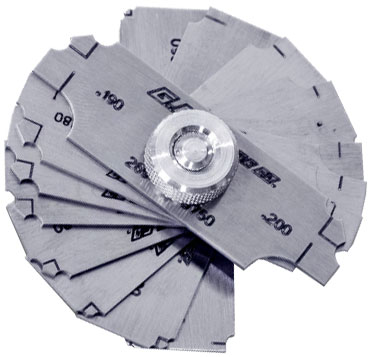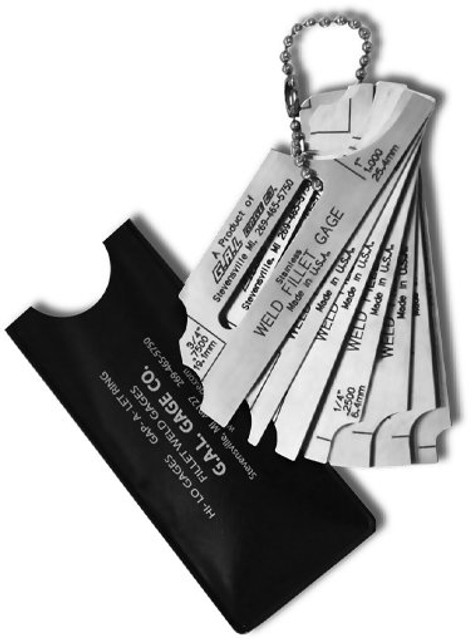Gauge Fillet Weld Explained: From Basics to Advanced Techniques
Gauge Fillet Weld Explained: From Basics to Advanced Techniques
Blog Article
Fillet Weld Design Methods: Enhancing Joint Performance and Visual Appeal for Structural Stability
In the world of structural design and manufacture, the value of fillet weld design strategies can not be overstated. By carefully considering aspects such as weld account optimization, product choice, joint preparation strategies, welding process performance, and aesthetic enhancement approaches, engineers and fabricators can accomplish an unified equilibrium in between functionality and appearance in their bonded frameworks.
Weld Account Optimization


Achieving an ideal weld account involves a thorough consideration of elements such as material thickness, joint arrangement, welding position, and desired welding rate. Furthermore, the choice of ideal welding parameters, such as voltage, existing, and travel speed, is fundamental in managing the shape and dimensions of the fillet weld. Using advanced welding strategies, such as pulse welding or robot welding, can better improve the weld profile to meet certain style needs and high quality criteria.
Essentially, weld profile optimization is an essential aspect of fillet weld design that directly influences the total efficiency and reliability of welded joints in structural applications.
Product Selection Factors To Consider
When considering material selection for fillet weld layout, the compatibility of the base steels is a crucial aspect affecting the structural integrity of the joint. It is necessary to select products that not just weld together efficiently yet likewise have similar mechanical properties to ensure the load is evenly distributed in between the base and the weld metals. Welding products with vastly various properties can bring about concerns such as anxiety focus, early joint failing, or fracturing.
Additionally, the environment in which the bonded structure will operate must be thought about when selecting products. Elements like corrosion resistance, temperature level changes, and direct exposure to chemicals can all affect the long life and efficiency of the weld joint. By picking materials that appropriate for the intended application and environment, the overall durability and reliability of the bonded joint can be substantially improved.
As a result, detailed factor to consider of material compatibility and environmental aspects is vital in making sure the weld joint's strength, durability, and general architectural stability.

Joint Prep Work Methods
Considering the crucial role material choice plays in making sure the structural stability of fillet weld joints, it is necessary to implement specific joint prep work methods that optimize the connection between the base metals. Joint prep work is a critical step that straight affects the high quality and toughness of the weld. One essential method is the cleansing of base steels to get rid of any type of pollutants like rust, oil, or paint that can compromise the weld's stability. This can be attained through techniques such as grinding, wire brushing, or chemical cleaning.
Furthermore, correct fit-up of the joint is important to ensure uniform distribution of the welding product and stop defects like incomplete penetration or too much accumulation. Beveling the edges of the base metals can create a groove that permits for deeper weld infiltration and a stronger bond. Furthermore, tack welding the components in position before the last weld aids preserve placement and minimizes distortion throughout the welding procedure. By meticulously adhering to these joint preparation methods, welders can improve the overall efficiency and visual appeals of fillet weld joints while making sure structural soundness.
Welding Refine Efficiency
Reliable welding procedures are necessary for attaining optimal productivity and top quality in fillet weld manufacture. Processes like gas metal arc welding (GMAW) and flux-cored arc welding (FCAW) are typically utilized for fillet welds due to their flexibility and rate.
Routine calibration of welding equipments, examination of consumables, and maintenance of welding lanterns can stop downtime and rework, eventually conserving time and resources. Trained welders are a lot more skilled at changing explanation parameters, troubleshooting concerns, and keeping consistent weld quality.
Aesthetic Improvement Approaches
To optimize the quality of fillet weld fabrication, applying visual enhancement methods can play a critical duty in guaranteeing accuracy and precision throughout the welding process. Visual aids such as weld dimension assesses and magnifying lenses can help in analyzing weld profiles and dimensions get more precisely. By incorporating these aesthetic enhancement methods into the welding process, welders can achieve not only structurally audio fillet welds yet also aesthetically appealing outcomes that satisfy sector criteria.

Conclusion
To conclude, maximizing fillet weld design involves careful factor to consider of weld profile, product option, joint preparation, welding procedure efficiency, and visual improvement methods. By executing these approaches, structural stability can be enhanced while additionally achieving aesthetic appeal. It is crucial to focus on both efficiency and visual appeals in fillet weld layout to ensure the general top quality and durability of the joint.
By carefully thinking about variables such as weld profile optimization, product selection, joint preparation methods, welding process effectiveness, and aesthetic improvement approaches, designers and fabricators can attain an unified equilibrium in between performance and look in their bonded structures.In the realm of fillet weld style, maximizing the weld account plays a critical role in guaranteeing structural honesty and performance. The weld profile, which includes the dimension and shape of the weld cross-section, directly affects the distribution of stress and load-bearing capability within the joint. It is necessary to select materials that not only weld with each other properly but additionally have similar mechanical buildings to guarantee the load dig this is equally dispersed between the weld and the base metals - Gauge Fillet Weld.In final thought, maximizing fillet weld style includes mindful consideration of weld account, product selection, joint prep work, welding process effectiveness, and visual enhancement techniques
Report this page